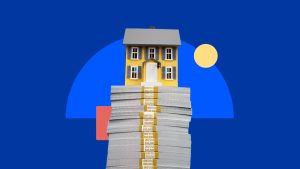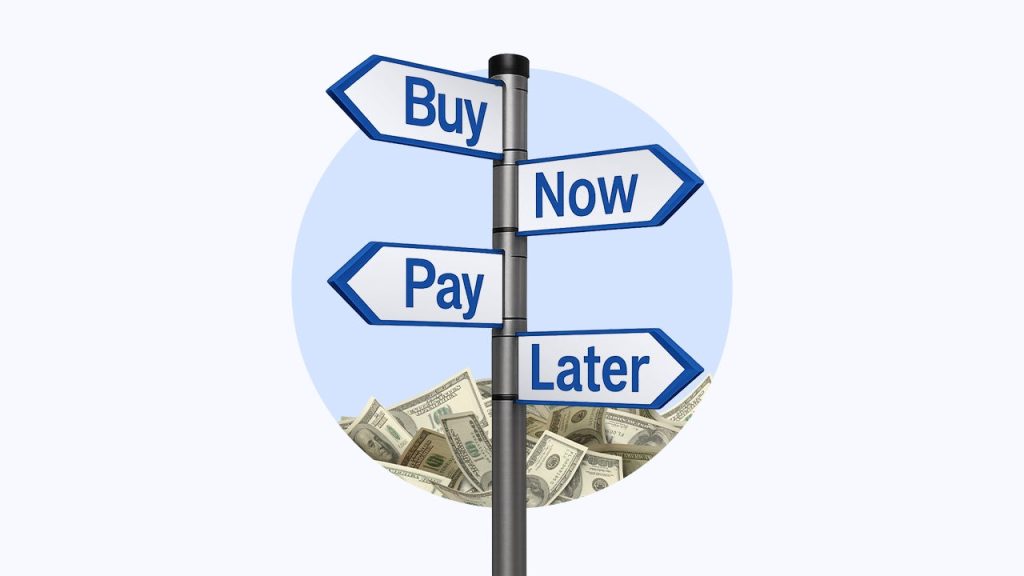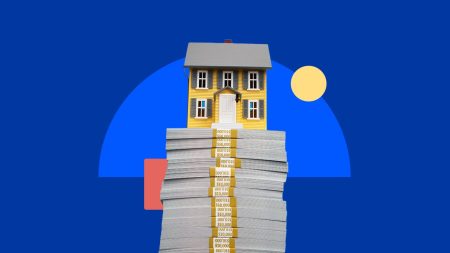Images by GettyImages; Illustration by Bankrate
The Consumer Financial Protection Bureau (CFPB) reported in June that buy now, pay later (BNPL) plans, the four-payments-in-six-weeks loan you can find from many online retailers, aren’t causing repayment struggles or financial distress for first-time borrowers. That’s a huge sigh of relief — and something of a surprise — if you read the agency’s BNPL analysis in January.

3 worrisome trends of buy now, pay later
And how to avoid becoming a statistic yourself
Read more
Under the consumer watchdog’s new leadership, it withdrew a previously issued rule that would have expanded consumer protections on BNPL. This latest analysis also focuses strictly on the experiences of first-timers, not all BNPL users.
All of that said, the CFPB’s new report seems to walk back its last one. So, what gives?
What’s going on at the CFPB?
The CFPB’s downfall is months in the making.
Remember when the Trump Administration shuttered the agency’s headquarters in early February? Or when the courts ordered that recently fired employees, including the former student loan ombudsman, could return to work in late March?
Well, the agency remains a quagmire. It doesn’t even have a long-term leader: Former FDIC board member Jonathan McKernan sat before the Senate on Feb. 27. His nomination was never put to a vote, however, and he was reassigned to the Treasury in mid-May.
In the meantime, the current CFPB has been undoing the work of its predecessor.
In addition to rescinding a rule that would have removed medical debt from credit reports, the new CFPB has also withdrawn the interpretative rule that would have mandated BNPL transactions be treated like those of credit cards.
Many agree that change is necessary at the CFPB
One popular idea, supported by America’s Credit Unions, for example, is to adjust the leadership structure to a bipartisan commission in the hopes of avoiding a politically-charged agency that swings as wildly as the White House.
Two CFPBs come to two different conclusions
Despite the upheaval at the CFPB, and its seemingly divergent conclusions about six months apart, there is more to the situation than an apparent contradiction due to an administration change.
Consider that the economists who authored the agency’s June report have been at the CFPB for more than four years and worked during the Biden Administration. One of them, Dr. Cortnie Shupe, was also a co-author of the January report. Bankrate requested interviews with the CFPB and the authors but didn’t get a response before publishing.
Still, the two reports’ divergent findings might still leave you scratching your head.
In this latest analysis, the CFPB matches first-time BNPL borrowers with their credit profiles over an 18-month span to help answer the question: Does BNPL borrowing leave consumers worse off when it comes to their other consumer debt obligations? The agency’s economists looked for any evidence that this might be the case, such as increasing balances, credit utilization, finance fees and delinquency.
Key conclusions about BNPL borrowers
|
January report |
June report |
|
Most take out multiple loans simultaneously. |
First-time borrowers increase their BNPL borrowing one quarter after receiving their first loan, but decreases after that. |
| Nearly 2 in 3 have subprime credit. | While they’re overrepresented in the category, those with subprime or no credit repaid their BNPL loans 98 percent of the time. |
| They’re likelier than peers who don’t use BNPL plans to hold higher balances on other consumer loans. | After borrowing a BNPL loan, their non-BNPL debt doesn’t rise — and no evidence suggests that BNPL access causes them to suffer non-BNPL-debt stress, such as delinquency and overreliance on credit cards. |
Both reports are in agreement on one thing: more research is necessary. Of course, the real BNPL battle is over regulation — something the CFPB’s current administration doesn’t seem to be in the mood for.
|
January |
June |
| “The importance of BNPL in the credit profiles of BNPL borrowers underlines the need for further research to understand how this growing financial product causally impacts borrowers’ financial health.” | “It is therefore critical that researchers and policymakers continue to regularly assess how BNPL borrowing is affecting broader measures of consumer indebtedness and financial well-being.” |
So, is BNPL harmful or helpful?
The data-backed answer to whether BNPL is a helpful tool or potentially damaging comes down to where you look and — at times — what you want to see. But the blind truth about whether BNPL is right for you is simple: it can be one or the other.
Bankrate senior industry analyst Ted Rossman has likened BNPL to power tools. They can help you get quickly if you’re smart about it, or they can be incredibly destructive and perhaps even dangerous to use.
The data bears that out, even if it’s limited. The CFPB’s research has been relatively treasured given the product’s novelty and lack of regulation and reporting. It wasn’t until this summer that FICO announced it would begin incorporating BNPL into credit scoring.
But put aside the CFPB for a moment. Bankrate’s new Buy Now, Pay Later Survey is plenty conclusive: 49 percent of people who have utilized BNPL reported that they experienced at least one problem, such as overspending (24 percent), missing payments (16 percent) and regretting a purchase (15 percent).
The ease of starting a BNPL plan — you can likely try qualifying via a soft credit check at online checkout — also poses the risk. It’s easy enough to apply and secure that you might jump in without considering the impact on your budget. And, as the CFPB’s January report highlighted, you might be tempted to stack these loans, making repayments even more difficult to track.
What’s your next step?
Aim to be objective in your own research and decision-making around BNPL. It can help to ask the following questions before you borrow:
- Can the purchase be postponed until you budget and save up for it in cash?
- Do you have better financing options, such as a credit card that carries greater protections?
- Do you already have a BNPL loan (or other consumer debt) to repay?
- Does the biweekly BNPL payment fit easily into your budget?
- Do you fully understand the terms and conditions of the potential BNPL loan?
- Would you be working with one of the most reputable BNPL companies?
The answers to these questions can help determine the best route for your finances.
Why we ask for feedback
Your feedback helps us improve our content and services. It takes less than a minute to
complete.
Your responses are anonymous and will only be used for improving our website.
Help us improve our content
Read the full article here









